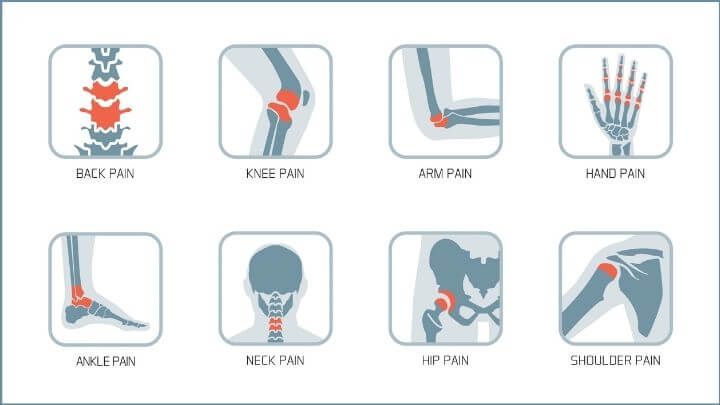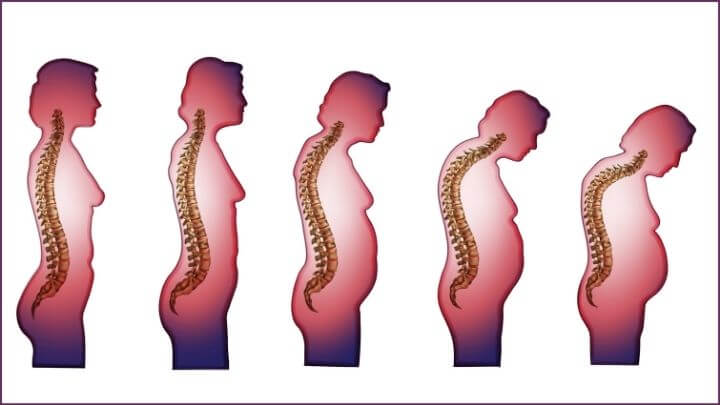The Dangers of Delaying a Trip To the Rheumatologist
Some joint issues can be caused by serious underlying conditions, and here’s how a rheumatologist can identify these conditions for the best treatment.
8 minute read
Last Updated December 6, 2021
Some joint issues can be caused by serious underlying conditions, and here’s how a rheumatologist can identify these conditions for the best treatment.
8 minute read
Last Updated December 6, 2021

A rheumatologist is a doctor specializing in the diagnosis and treatment of various joint, muscle, and bone conditions. While some joint or muscle pain can be temporary or the result of injury, many chronic conditions can lead to long-term interference with daily activities.
Chronic pain should be addressed to identify its underlying cause and prevent more serious complications, leading to mobility and daily function loss. Your primary care physician may be able to identify conditions affecting joint mobility, but in more complex cases or when symptoms persist or worsen, you are best suited to seek an evaluation from a trained rheumatologist.
Many serious joint conditions are linked to aberrant immune system response, and without proper diagnosis and treatment, widespread damage throughout the body can occur. Most musculoskeletal conditions respond best to treatment in the early stages of the disease, so delaying your visit to the rheumatologist may lead to lifelong loss of function and disability.
It is important to pay attention to your symptoms and discuss joint health and function with your physician. Certain conditions can significantly limit mobility and impact quality of life if left untreated. The sooner the condition and underlying cause are identified, the better the chances of successful treatment. Early diagnosis and intervention are key!
You should see your rheumatologist if you notice any of the following:
♦ Joint pain that increases with weight-bearing
♦ Tenderness in the joint area
♦ Joint swelling
♦ Joint stiffness worsens after inactivity
♦ Awakening at night with joint discomfort
♦ Reduced range of motion of the joint
♦ Limping
♦ Locking of a finger or joint
♦ Joint redness
♦ Warmth in joint
♦ Weakness or numbness

Visiting your rheumatologist is the best way to evaluate the health of your joints. With a thorough evaluation of joint function and the development of a treatment program, you may be able to avoid health complications such as:
♦ Joint narrowing as a result of total cartilage breakdown
♦ Loss of stability as tendons and ligaments deteriorate
♦ Bone spurs
♦ Stress fractures
♦ Pinched nerves in your neck, back, and extremities
The symptoms detailed above may indicate a serious condition, so it is important to get an accurate diagnosis. A rheumatologist can correctly identify the condition and develop a treatment plan to reduce the risk of long-term loss of function and disability.
The immune system is designed to defend the body, but sometimes it acts erroneously and targets healthy cells and tissues, including the joints. There isn’t always a known cause for these conditions, but there are early symptoms that you can look out for, including:
♦ Joint pain and stiffness
♦ Joint swelling and redness
♦ Numbness in hands or feet
♦ Chronic fatigue
♦ Skin rashes
♦ Achy muscles
♦ Trouble concentrating
Don’t wait: There is often no cure for conditions caused by an aberrant immune response, but treatment can help control an overactive immune system. Treatment will lead to reduced attacks on your healthy joints and tissues. If left untreated, healthy tissues will continue to be attacked, causing chronic damage, pain, and decreased mobility, and even deformities in the case of your joints.

Being overweight may be caused by consuming more calories than your body can burn. When you have a high fat-to-muscle ratio, it puts a significant strain on bones and joints, which may manifest as pain. As you age, your metabolic rate naturally slows down, making it easier to gain weight and increasing the risk of joint issues. In addition to age, the most common causes for becoming overweight include:
♦ Poor diet high in fats
♦ A sedentary lifestyle
♦ Lack of sleep, which changes hormones and food cravings
♦ Genetics, which can influence your body's metabolism and fat storage
Don’t wait: Carrying extra weight puts increased pressure on your joints, which speeds up the natural wear and tear of cartilage. As a result, being overweight can lead to serious consequences, including:
♦ Chronic joint deterioration
♦ Aberrant immune responses
♦ Elevated blood sugar levels
♦ Liver issues
♦ Cardiovascular issues
♦ Abnormal cell growth
♦ Impaired sleep
♦ Blood pressure issues
Cartilage in the joints naturally breaks down with age and use. With less of this flexible connective tissue to protect your joints and absorb shock, pain, and immobility can develop. The most commonly identified symptoms include joint pain, swelling, and stiffness of joints and the surrounding areas. In addition to these symptoms, you may also notice:
♦ Decreased range of motion of the joint
♦ Reduced flexibility
♦ Easy fatigability
♦ Possible joint deformity
Don’t wait: Along with overuse, some conditions can contribute to the faster breakdown of cartilage. Infections or injuries, as well as aberrant immune system responses, can weaken the joints. Identifying and treating these conditions are essential for protecting your joints, maintaining mobility, and preventing chronic pain.

Bone is living tissue that is continuously built and broken down. As you get older, bone is broken down faster than new bone can be built. Weakened bones can develop, leading to an increased risk of fracture and chronic joint pain. Symptoms that may occur as a result of fracture from brittle bones include:
♦ Back pain
♦ Joint pain and immobility
♦ Loss of height over time
♦ A stooped posture
♦ Another bone that breaks much more quickly than expected
♦ Need for assistive devices such as wheelchair, walker, or cane
Don’t wait: Immune-mediated responses that mistakenly attack healthy joints can cause joint tissue deterioration as well as bone density loss. This is in addition to the natural bone density loss that occurs with age. To maintain proper mobility and reduce fractures, it is important to seek treatment to prevent chronic issues.
Numbness or tingling is known as paresthesia and is most often caused by nerve compression or restricted blood flow to an extremity. It can also occur when a swollen joint compresses or irritates a nearby nerve. On occasion, a tingling feeling is nothing to worry about, but you should seek immediate medical evaluation without an apparent cause or with prolonged symptoms.
Don’t wait: Several conditions are linked to numbness in the extremities, so if this is persistent, reach out to your doctor to discuss your symptoms. Symptoms that could indicate a more serious cause include
♦ Inability to walk or move
♦ Loss of consciousness
♦ Slurred speech
♦ Inability to think clearly
An underlying condition that requires treatment could be causing numbness, and if left ignored, the risk for joint pain and permanent nerve damage increases.
Your doctor will conduct a physical exam of the affected joint(s) when you present with joint stiffness, swelling, discomfort, or immobility. The doctor will look at and feel around the affected joint(s) and conduct range of motion testing to evaluate the cause and severity of the joint issue. Full evaluation involves testing for damage to the joint and surrounding soft tissues, including tendons and ligaments.

Your doctor may also decide to conduct further testing to evaluate joint abnormalities, such as imaging tests (X-rays, MRI scans, CT scans, and ultrasounds) or nerve tests to identify compressed nerves that occur due to swelling in the joint or with joint narrowing. Finally, blood tests are used to identify potential immune-mediated issues that could be responsible for reduced joint function, as below:
♦ Rheumatoid Factor (RF) and CCP Antibody tests look for specific proteins produced by the immune system.
♦ Elevated Erythrocyte Sedimentation Rate (ESR) or C-reactive protein (CRP) levels may be associated with joint stiffness and swelling.
♦ Antinuclear Antibody (ANA) tests look for the presence of antinuclear antibodies in the blood.
Early identification of poor joint function provides the best opportunities for effective treatment and prevention of long-term joint issues. Minor joint issues and discomfort can often be treated with ice therapy to reduce swelling and heat therapy to relax muscles. The most commonly used treatment for joint issues include:
♦ Oral or topical treatments can be taken to reduce swelling and discomfort.
♦ Physical therapy and low-impact exercises can help improve muscle strength to better support and stabilize a weakened joint.
♦ Corticosteroids can be injected directly into the affected joint to help reduce pain and swelling.
♦ Bracing provides compression around the affected joint to help improve mobility and reduce pain.
♦ Surgery is an option when more conservative treatment methods have failed and will depend on the cause and severity of your condition.
Underlying medical conditions can also be the cause of chronic joint discomfort and reduced mobility. While these treatment methods can relieve symptoms, a more natural approach can help heal and strengthen joints to promote optimal joint function and quality of life.
Medical treatment options are designed to alleviate discomfort but may leave the underlying condition untreated. You do not have to live with this pain. There are natural, clinically-studied ingredients that support joint health and function.

As part of a healthy lifestyle, 1MD Nutrition™ joint health supplements provide comprehensive joint care. The patented joint formulas combine clinically studied ingredients, touted by researchers in the latest joint health scientific literature.
MoveMD®️ combines natural ingredients backed by the latest in joint health science to help you take back control of life without the worry of joint pain. MoveMD®️ is a revolutionary joint health solution developed to provide targeted joint support to boost function and mobility from the inside. With AprèsFlex®️, a patented and bio-enhanced form of boswellic acid and Zanthin®️ Natural Astaxanthin, a patented antioxidant clinically proven to outperform Glucosamine and Chondroitin, you can boost joint health, aid joint discomfort, and restore joint mobility.
Turmeric has been used in traditional medicine for millennia, but these days, curcumin has been digested too quickly for the true health benefits to be effective. CurcuminMD®️ Plus uses Longvida®️ Optimized Curcumin formula, which has been found to be 285 times more bioavailable than standardized 95% curcumin. With the addition of Boswellia serrata, this supplement helps relieve sore, stiff joints and helps prevent cartilage loss.
The KrillMD™ formula uses pure, Antarctic krill oil, clinically-studied to be twice as effective as fish oil. This combination of highly potent omega-3 fatty acids, bonded to krill phospholipids, is combined with the powerful antioxidant astaxanthin, making for improved mobility thanks to more flexible joints. KrillMD™ provides heart and brain health support too.
Your primary physician can help identify minor joint issues but should symptoms worsen or not improve, it is important to seek an evaluation with a rheumatologist. While joints do wear naturally over time, some issues can be caused by a more serious underlying condition. Your rheumatologist has the training and experience to correctly identify these conditions to get you the most effective treatment.
Most joint conditions can be successfully treated when identified early, but if ignored, the risk of immobility increases, which can significantly impact your quality of life. Don’t let pain slow you down. Speak with a rheumatologist about your symptoms, and with a proactive approach and the superior joint support from MoveMD®️, you can keep right on moving.
Dr. Adam Kreitenberg

Dr. Adam Kreitenberg is dual board-certified in both rheumatology and internal medicine. He completed his internal medicine internship, residency, and rheumatology fellowship at the University of Southern California and Los Angeles County Medical Center.
Be first in line for major savings, fitness and nutrition tips, health news, and more